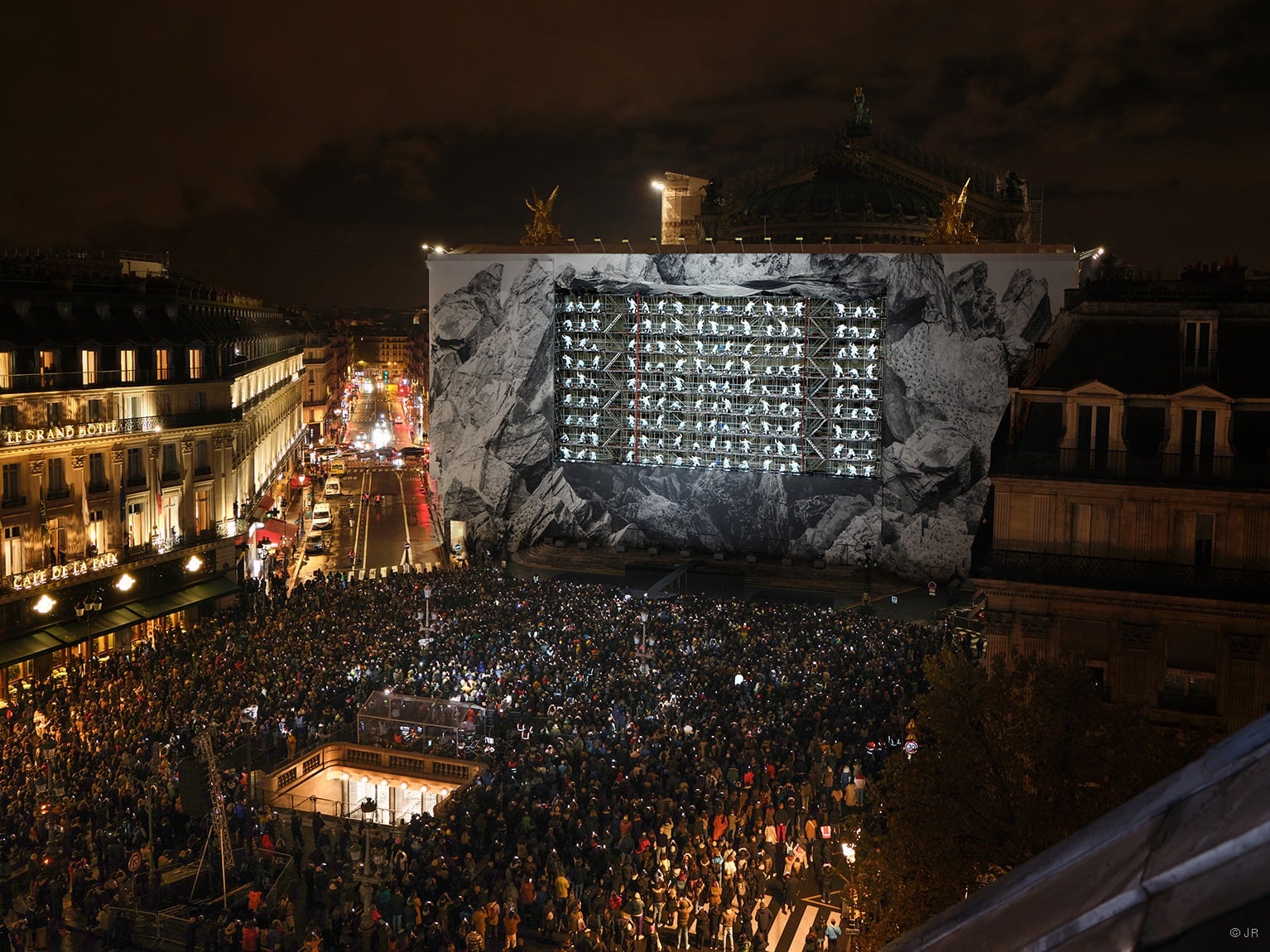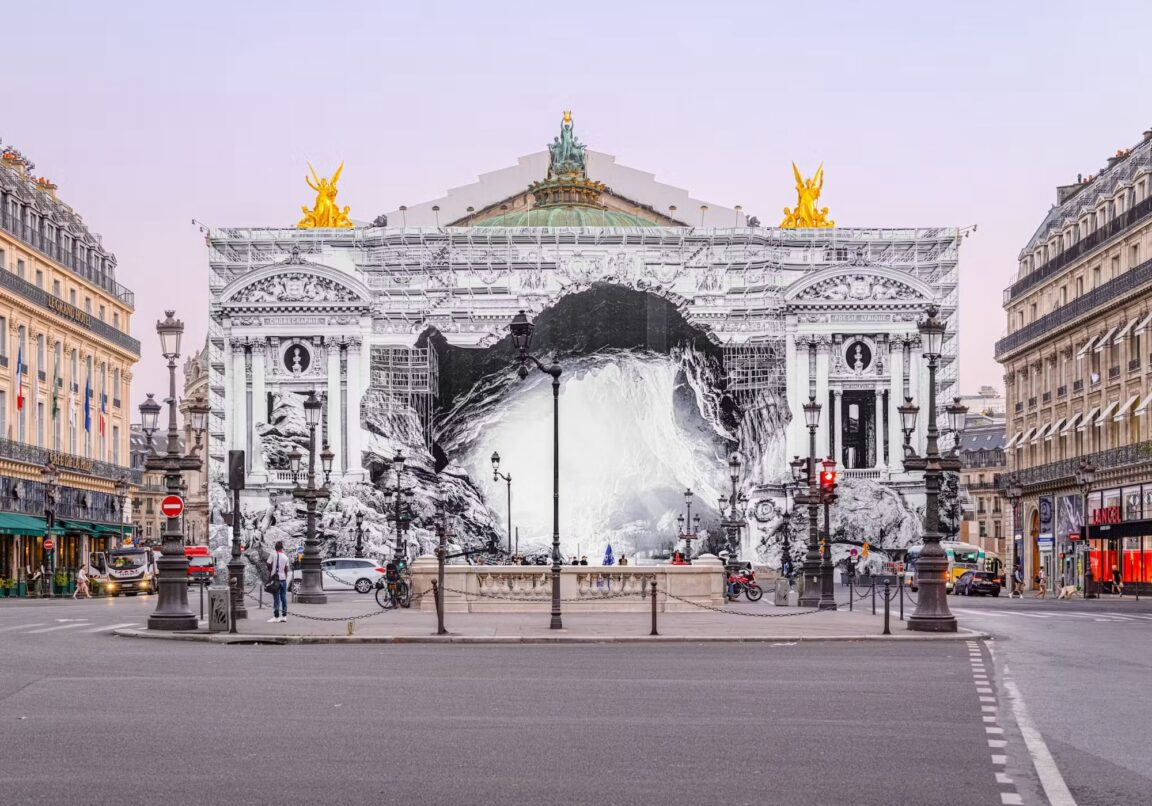French artist JR, known for his thought-provoking projects, recently shared insights about his latest endeavor, the Retour à la Caverne project. Emphasizing the artist’s quest for illumination, JR articulates, “As artists, our perpetual mission is to seek out the light.” He believes in combating darkness not with more of the same, but with even the smallest flicker of light.
The Grandeur of Retour à la Caverne
JR’s recent project is anything but small-scale. Retour à la Caverne engulfs Paris’s Palais Garnier, an iconic opera house, in a monumental optical illusion while the building undergoes renovations. The artwork’s initial phase features a representation of a cave etched into the opera house, creating a striking contrast of light and dark. This installation, both physically large and metaphorically profound, explores the interplay of light and shadow. It draws inspiration from Plato’s allegory, suggesting that emerging from darkness, or the cave, is akin to gaining enlightenment.
The Two-Act Structure
Mirroring an opera’s structure, JR‘s work is divided into two acts. The first act was unveiled in the fall with a four-night display of projected images. Its sequel, however, debuted on November 12. JR describes the first act as an invitation to leave the cave and explore, while the second act is an invitation to re-enter this symbolic space. The first act visually represented a cavern at the heart of the building, while the second act shifted the perspective to place viewers inside this imagined cave.
Chiroptera: A Performance of Light and Movement
Titled “Chiroptera,” the performance in the second act featured choreography by Damien Jalet and music by Thomas Bangalter. It was a grand spectacle with over 150 dancers performing on a seven-story scaffold. The performance began with a dramatic introduction by ballerina Amandine Albisson. Her opening act metaphorically opened the cave, leading to a descent into darkness. JR’s work often involves audience participation, and this was no exception. He encouraged the audience to use headlamps and mobile phones to light up the performance, showcasing how collective effort can create light.

Engaging with JR’s Art
JR’s works are not just to be viewed but experienced. His projects often blur the lines between the artwork and the audience, creating immersive experiences. This interaction is a hallmark of his style, inviting people to not just observe but become part of the artistic process. His work is accessible not only at the physical locations but also through digital platforms, allowing a broader audience to engage with his art.
The Impact of JR’s Work
JR’s projects extend beyond the visual spectacle; they are conversations about societal issues, history, and human experience. His art often highlights social themes, encouraging viewers to reflect on their own perceptions and the world around them. This fusion of art with social commentary has positioned JR as a prominent figure in contemporary art.

JR’s Retour à la Caverne project is a testament to his ability to blend art with profound messages. It encourages us to contemplate the balance of light and darkness, both in art and in life. By participating in his work, audiences not only witness art but also contribute to its narrative, making JR’s work uniquely interactive and universally resonant.





